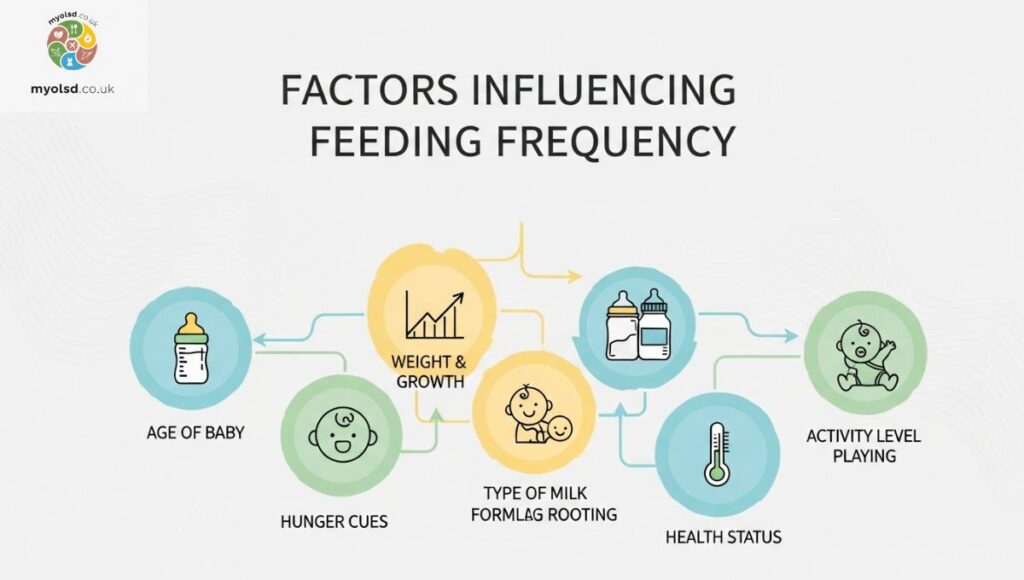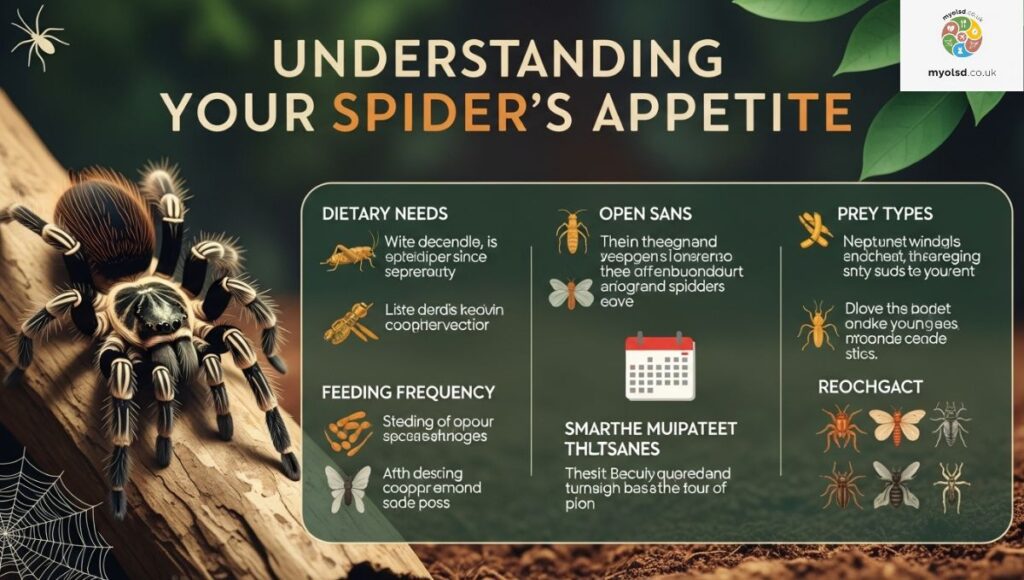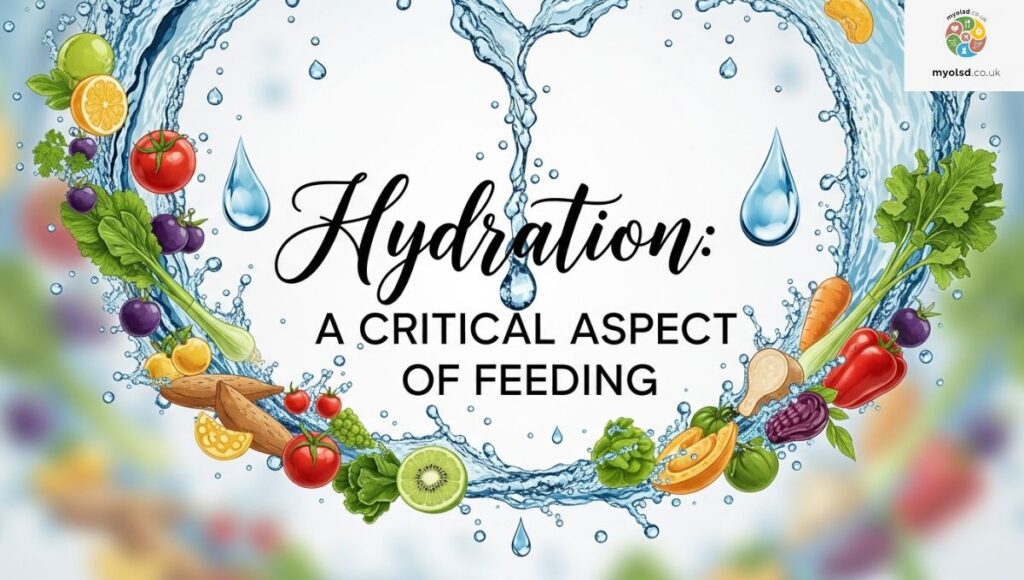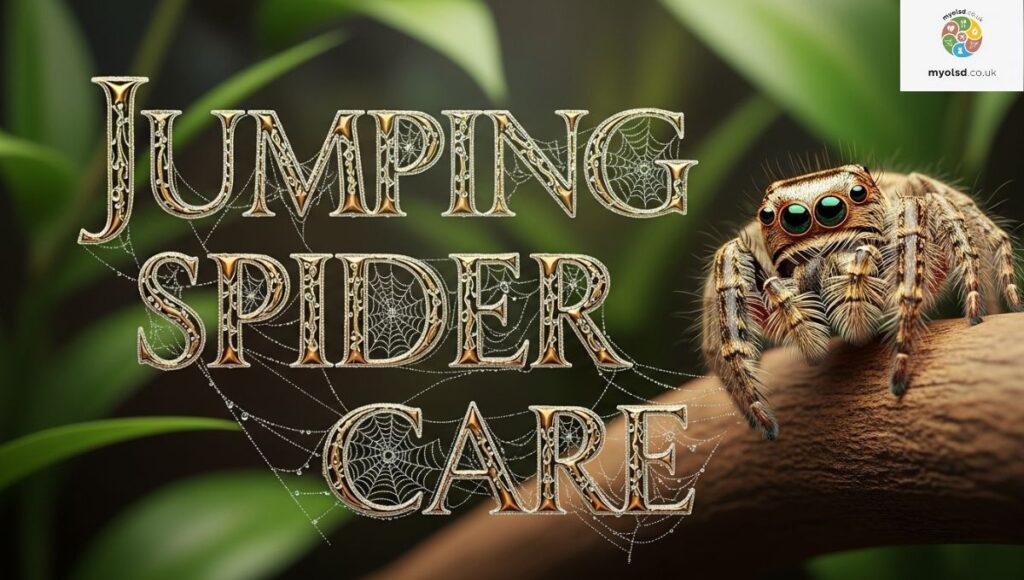Have you ever stared at your tiny pet spider and wondered, How often do jumping spiders eat? It can be a little confusing because sometimes they gobble up prey quickly, and other times they don’t seem interested at all. As a new spider keeper, it’s easy to worry whether you’re feeding too much or not enough.
That’s exactly what this post will clear up for you. We’ll break down how often jumping spiders actually need to eat, what factors affect their feeding schedule, and how to tell when it’s time for the next meal. By the end, you’ll feel confident about giving your little jumper the right care without any second-guessing.
Factors Influencing Feeding Frequency

The answer to how often do jumping spiders eat depends on several things. Age, size, and activity level all play major roles in how often your spider feels hungry.
Environmental factors such as temperature, humidity, and prey availability also affect feeding habits. A warmer enclosure often increases metabolism, while cooler conditions may slow down appetite.
Feeding Frequency for Different Life Stages
Young spiders, or spiderlings, have faster metabolisms and usually need food daily or every other day. They thrive on small prey like fruit flies or pinhead crickets.
Adult spiders, on the other hand, often eat every 2 to 3 days. Females may require extra nutrition during egg development, while males typically need less.
Types of Prey and Their Impact

Offering a variety of prey is key to a healthy jumping spider diet. Common feeder insects include fruit flies, crickets, bluebottle flies, and small roaches.
Different prey provide different nutrients. For example, mealworms are fatty and best fed occasionally, while flies and crickets are better for frequent feeding.
Read more Article:Required Age to Participate in Paintball Games
Tools For Feeding Jumping Spiders
Feeding tools make the process cleaner and safer. Tweezers, paint brushes, and squeeze bottles can help place or handle live prey.
Many keepers also use small critter keepers or culture pots for storing insects like fruit flies. This makes feeding more convenient and organized.
Understanding Your Spider’s Appetite

Observation is the best way to judge your spider’s appetite. A healthy spider actively stalks prey and shows curiosity toward movement.
If your spider ignores food, it may not be hungry, molting, or simply stressed. Paying attention to behavior will help you set the right feeding schedule.
Signs of Overfeeding or Underfeeding
Overfeeding can cause a bloated abdomen, lethargy, and reduced activity. This may shorten your spider’s lifespan over time.
Underfeeding, on the other hand, leads to a thin abdomen and lack of energy. Both extremes can harm your spider’s overall health.
Hydration: A Critical Aspect of Feeding

Jumping spiders also need water, even though they don’t drink much. A shallow water dish or light misting provides hydration safely.
Avoid deep containers since spiders can drown. Water droplets on leaves or enclosure walls are usually enough for them to sip.
Common Feeding Mistakes to Avoid
New keepers sometimes leave prey in the enclosure for too long. This can stress or even injure the spider if the prey fights back.
Another mistake is feeding fatty insects too often. Balance is key mix up prey types to avoid obesity or nutrient deficiencies.
Conclusion: Creating a Balanced Diet

Feeding your spider isn’t just about giving food—it’s about creating balance. Regular feeding, prey variety, and hydration ensure long-term health.
By watching your spider’s appetite and adjusting as needed, you’ll provide the best care possible.
Expert Tips on Safely Handling Your Jumping Spider
Always remove uneaten prey within 24 hours. This prevents stress and keeps the enclosure clean.
When offering food directly, use tweezers or a brush to avoid accidental bites. Safety for both you and your spider is important.
The Ultimate Guide to Feeding Your Jumping Spider
To sum it up, a good feeding routine depends on age, size, and environment. Spiderlings need daily meals, while adults eat every 2–3 days.
By giving live prey, providing hydration, and avoiding overfeeding, you’ll keep your spider healthy, active, and thriving.
Jumping spider care

Feeding is just one part of overall care. Combine good nutrition with the right environment proper humidity, safe enclosures, and observation for a happy, long-lived spider.
FAQS
Can jumping spiders recognize people?
Yes, jumping spiders can recognize people by sight and may even remember frequent caretakers.
Can you overfeed your jumping spider?
Yes, overfeeding can cause obesity and shorten your spider’s lifespan.
Do jumping spiders stop eating when they’re full?
Yes, they usually stop eating once their abdomen is full and won’t accept more prey.
How often do I mist my jumping spider?
Lightly mist the enclosure 2 to 3 times a week to maintain humidity and provide water droplets.


1 thought on “How Often Do Jumping Spiders Eat? A Simple Guide for New Keepers”